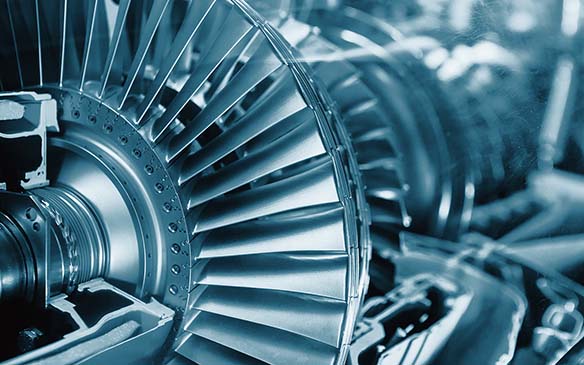References
[1] Expression attributed to Bernard de Chartres and taken up by Yves Bréchet in the preface of the book Georges Vendryes le “père” des réacteurs à neutrons rapides.
[2] S. Gorsse, D.B. Miracle, O.N. Senkov, Mapping the world of complex concentrated alloys, Acta Materialia 135 (2017) 177–187, DOI: 10.1016/j.actamat.2017.06.027.
[3] S. Gorsse, J.-P. Couzinié, D. B. Miracle, From high-entropy alloys to complex concentrated alloys, C. R. Physique 19 (2018) 721–736, DOI: 10.1016/j.crhy.2018.09.004.
[4] B. Gwalani, S. Gorsse, D. Choudhuri, Y. Zheng, R.S. Mishra, R. Banerjee, Tensile yield strength of a single bulk Al0.3CoCrFeNi high entropy alloy can be tuned from 160 MPa to 1800 MPa, Scripta Materialia 162 (2019) 18–23, DOI: 10.1016/j.scriptamat.2018.10.023.
[5] Y.-T. Chen, Y.-J. Chang, H. Murakami, S. Gorsse, A.-C. Yeh, Designing high entropy superalloys for elevated temperature application, Scripta Materialia 187 (2020) 177–182, DOI: 10.1016/j.scriptamat.2020.06.002.
[6] D.B. Miracle, M.H. Tsai, O.N. Senkov, V. Soni, R. Banerjee, Refractory high entropy superalloys (RSAs), Scripta Materialia 187 (2020) 445–452, DOI: 10.1016/j.scriptamat.2020.06.048.
[7] S. Gorsse and F. Tancret, Current and emerging practices of CALPHAD toward the development of high entropy alloys and complex concentrated alloys, Journal of Materials Research 33(19) (2018) 2899-2923, DOI: 10.1557/jmr.2018.152.
[8] B. Gwalani, S. Gorsse, D. Choudhuri, M. Styles, Y. Zheng, R.S. Mishra and R. Banerjee, Modifying transformation pathways in high entropy alloys or complex concentrated alloys via thermo-mechanical processing, Acta Mater. 153 (2018) 169-185, DOI: 10.1016/j.actamat.2018.05.009.
[9] O.N. Senkov, S. Gorsse, D.B. Miracle, High temperature strength of refractory complex concentrated alloys, Acta Mater. 175 (2019) 394-405, DOI: 10.1016/j.actamat.2019.06.032.
[10] B. Gwalani, S. Gorsse, V. Soni, M. Carl, N. Ley, J. Smith, A.V. Ayyagari, Y. Zheng, M. Young, R.S. Mishra, R. Banerjee, Role of copper on L12 precipitation strengthened fcc based high entropy alloy, Materialia 6 (2019) 100282, DOI: 10.1016/j.mtla.2019.100282.
[11] D. Choudhuri, B. Gwalani, S. Gorsse, M. Komarasamy, S.A. Mantri, S.G. Srinivasan, R.S. Mishra, R. Banerjee, Enhancing strength and strain hardenability via deformation twinning in fcc-based high entropy alloys reinforced with intermetallic compounds, Acta Mater.165 (2019) 420-430, DOI : 10.1016/j.actamat.2018.12.010.
[12] ACL-2020. S. Dasari, A. Jagetia, Y.-J. Chang, V. Soni, B. Gwalani, S. Gorsse, A.-C. Yeh, R. Banerjee, Engineering multi-scale B2 precipitation in a heterogeneous FCC based microstructure to enhance the mechanical properties of a Al0.5Co1.5CrFeNi1.5 high entropy alloy, Journal of Alloys and Compounds 830 (2020) 154707, DOI: 10.1016/j.jallcom.2020.154707.
[13] S. Dasari, V. Chaudhary, B. Gwalania, A. Jagetia, V. Soni, S. Gorsse, R.V. Ramanujan, R. Banerjee, Highly Tunable Magnetic and Mechanical Properties in an Al0.3CoFeNi Complex Concentrated Alloy, Materialia 12 (2020) 100755, DOI: 10.1016/j.mtla.2020.100755.
[14] S. Dasari, A. Jagetia, V. Soni, B. Gwalani, S. Gorsse, and R. Banerjee, Engineering Transformation Pathways in an Al0.3CoFeNi Complex Concentrated Alloy Leads to Excellent Strength-Ductility Combination, Materials Research Letters, 8(11) (2020) 399, DOI: 10.1080/21663831.2020.1777215.
[15] S. Dasari, B. Gwalani, A. Jagetia, V. Soni, S. Gorsse, R. Banerjee, Hierarchical Eutectoid Nanolamellar Decomposition in an Al0.3CoFeNi Complex Concentrated Alloy, Scientific Reports 10 (2020) 4836, DOI : 10.1038/s41598-020-61538-6.
[16] S. Gorsse and O.N. Senkov, About the Reliability of CALPHAD Predictions in Multicomponent Systems, Entropy 20(12) (2018) 899, DOI: 10.3390/e20120899.
[17] S. Gorsse, M.H. Nguyen, O.N. Senkov, D.B. Miracle, Database on the mechanical properties of high entropy alloys and complex concentrated alloys, Data in Brief 21 (2018) 2664–2678. DOI: 10.1016/j.dib.2018.11.111.

